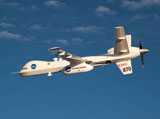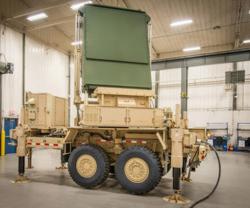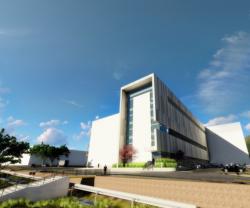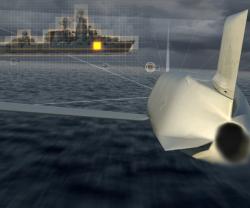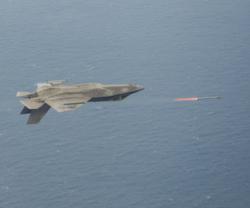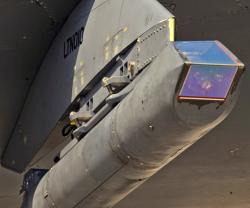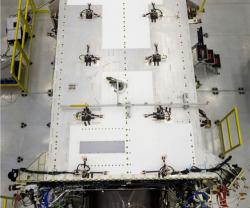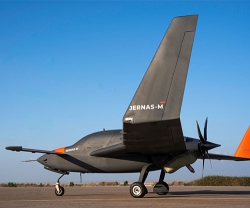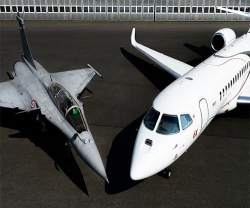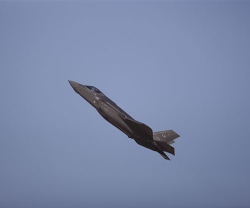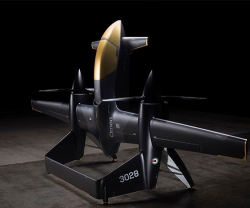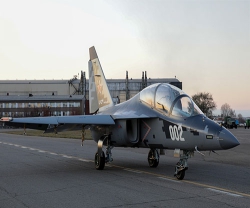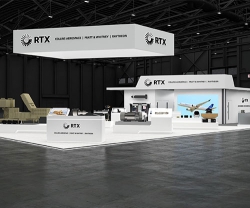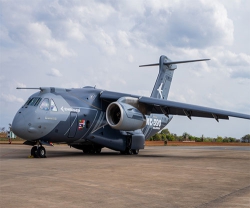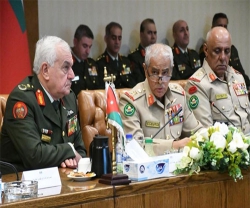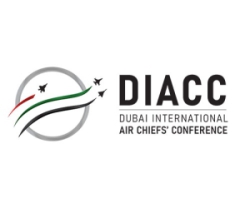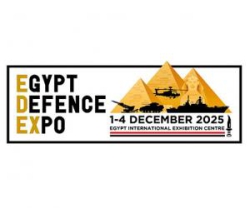Flight Testing for Lockheed Martin’s TRACER
21.04.2011 North America
Lockheed Martin's Tactical Reconnaissance and Counter-Concealment-Enabled Radar, TRACER, has completed flight testing aboard a Predator B MQ-9 Unmanned Aerial System. TRACER is a dual-band (UHF and VHF) synthetic-aperture radar capable of detecting and geo-locating objects that are buried, camouflaged or concealed under foliage. Classified as a queuing sensor, TRACER processes images in real time, and can immediately down-link captured images to multiple ground stations. Prior to the MQ-9 UAS flight testing, TRACER had successfully completed 100 test flights on manned platforms.
"TRACER has demonstrated its long endurance, wide-area surveillance capability to detect targets in all operational environments - in any type of weather, day and night," said Jim Quinn, vice president of C4ISR Systems with Lockheed Martin's IS&GS-Defense. "TRACER will provide commanders with intelligence not currently available from higher frequency radars or electro-optical systems."
During the flight tests aboard the Predator B MQ-9, TRACER focused on identifying targets of interest that would be relevant to multiple theatres - including CENTCOM, PACOM, AFRICOM and SOUTHCOM. Over the course of the four month testing, the TRACER team validated the radar's performance in the harsh environment of an UAS configuration, thus mitigating risk for eventual installation on a tier IV UAS or other platforms, such as the YMQ-18Aunmanned aerial helicopter. During the tests the team also demonstrated satellite data link control of both the vehicle and radar system.
There are currently 4 qualified TRACER systems available for deployment on manned or unmanned platforms. TRACER was developed for the U.S. Army's Intelligence and Information Warfare Directorate, based at Aberdeen Proving Grounds, Maryland.
The TRACER system's design is predicated on Lockheed Martin's operationally proven foliage penetration (FOPEN) system, which was developed specifically to detect vehicles, buildings, and large metallic objects in broad areas of dense foliage, forested areas and wooded terrain. The radar's advanced detection capability suppresses background clutter and returns from stationary objects, while revealing the positions of mobile and portable targets. Over the course more than 1,000 operational missions, the low frequency FOPEN radar system's detection and tomography capabilities have proven extremely robust against a variety of targets and foliage environments.
"TRACER has demonstrated its long endurance, wide-area surveillance capability to detect targets in all operational environments - in any type of weather, day and night," said Jim Quinn, vice president of C4ISR Systems with Lockheed Martin's IS&GS-Defense. "TRACER will provide commanders with intelligence not currently available from higher frequency radars or electro-optical systems."
During the flight tests aboard the Predator B MQ-9, TRACER focused on identifying targets of interest that would be relevant to multiple theatres - including CENTCOM, PACOM, AFRICOM and SOUTHCOM. Over the course of the four month testing, the TRACER team validated the radar's performance in the harsh environment of an UAS configuration, thus mitigating risk for eventual installation on a tier IV UAS or other platforms, such as the YMQ-18Aunmanned aerial helicopter. During the tests the team also demonstrated satellite data link control of both the vehicle and radar system.
There are currently 4 qualified TRACER systems available for deployment on manned or unmanned platforms. TRACER was developed for the U.S. Army's Intelligence and Information Warfare Directorate, based at Aberdeen Proving Grounds, Maryland.
The TRACER system's design is predicated on Lockheed Martin's operationally proven foliage penetration (FOPEN) system, which was developed specifically to detect vehicles, buildings, and large metallic objects in broad areas of dense foliage, forested areas and wooded terrain. The radar's advanced detection capability suppresses background clutter and returns from stationary objects, while revealing the positions of mobile and portable targets. Over the course more than 1,000 operational missions, the low frequency FOPEN radar system's detection and tomography capabilities have proven extremely robust against a variety of targets and foliage environments.
Latest news
Latest events
Dubai International Air Chiefs’ Conference (DIACC 2025)
16 Nov 2025Atlantis, The Palm Dubai - United Arab EmiratesDubai Airshow
17 - 21 Nov 2025Dubai World Central (DWC) - United Arab EmiratesEgypt Defence Expo (EDEX)
01 - 04 Dec 2025Egypt International Exhibition Center New Cairo - EgyptDoha International Maritime Defence Exhibition & Conference (DIMDEX 2026)
19 - 22 Jan 2026Doha - Qatar

